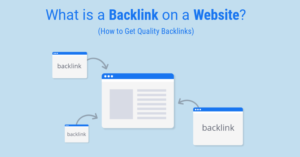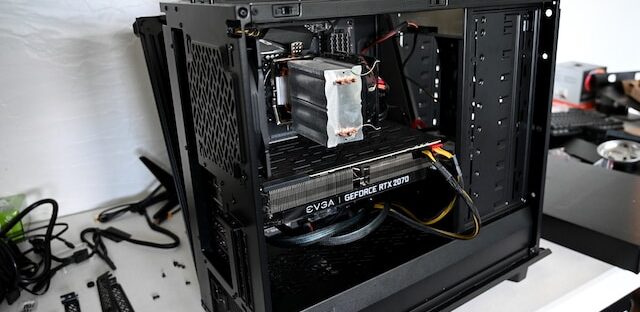A backlink is a link from another website that points to your web resource. The web resource may be a website, web page, or web directory. Search engines like Google view backlinks as votes of confidence and can improve your search engine rankings.

You can earn valuable backlinks by creating useful content for other websites. This can include research studies, infographics, and long-form blog posts. Read on Rank Boss to learn more.
Linkable assets are a type of online content that can attract a lot of attention from readers. They often include images, graphs, and infographics. They are designed to appeal to various interests and have high-quality information. They can be used to build links, promote a website, and increase its domain authority. They can also help boost search engine optimization (SEO) and traffic.
There are a variety of different types of linkable assets, and choosing which one to create depends on who you are targeting and what industry you are in. In general, creating a successful linkable asset takes a large amount of time and resources, but it is worth the investment in the long run. It can also be a good idea to work with a digital marketing agency that has experience in this area.
The most common type of linkable asset is a list. This is a content piece that contains information, rankings or awards on a particular topic. It can be a great way to get your site noticed, especially if it is from a well-established site.
Examples of this type of content include “Best Burger Joints in Manhattan” or “Top Ad Campaigns of 2021.” These articles are a great way to attract links because they provide valuable information for readers and are easy to share. However, it is important to remember that lists are only effective if they have a compelling title and are relevant to the reader’s interest.
Another popular kind of linkable asset is a trend or statistic. This is similar to original research, but it has a more immediate impact on the audience. It is also more likely to be shared than a report.
In order to create a linkable asset, you need to identify the search intent and the audience for your content. This will help you decide what kind of content to write and how to structure it. You should also try to include a number of images and short videos. These are some of the best ways to attract links and increase your website’s authority.
Off-page optimization
Off-page optimization involves the actions that take place outside of your website to improve its search engine rankings. This includes things like backlinks, mentions on other websites, and social media engagement. It can also help with your page-rank authority, which is a significant ranking factor for Google.
In addition to improving your search engine rankings, off-page optimization can help you stand out from the competition and build brand awareness. This strategy involves creating engaging and informative content that people want to share and link to. This helps your site gain more visibility and traffic, which can increase your sales and revenue. It can also help you build a solid online reputation, which can make your business more trustworthy.
The first step in off-page optimization is to analyze your current backlinks. Use a tool like Moz, Ahrefs, or Semrush to check your backlinks and see which ones are working. Once you have a list of your best backlinks, you can focus on building new ones. In order to get the most effective backlinks, you should target high-quality websites with relevant keywords in your industry. Using the correct anchor text is also important for off-page optimization.
Another way to improve your off-page optimization is to guest post on other blogs. This is a great way to attract links from reputable sites and increase your SEO rankings. Just make sure to only write guest posts on blogs with high-quality content. Otherwise, it will damage your website’s credibility and hurt your rankings.
Off-page optimization can also be achieved through video marketing. YouTube and Google both prioritize videos on their results pages, and it can help you rank higher in organic search. Plus, videos are a great way to promote your products and services.
Off-page optimization is just as important as on-page optimization, and both are essential for boosting your SEO rankings. Off-page optimization is more difficult to control, but it can help you rank higher in SERPs and attract more customers. Just remember to always keep in mind the guidelines set by your preferred search engine and stay away from any black-hat strategies.
Link building strategy
You may have heard of the importance of building quality backlinks to your site in order to improve your search engine optimization (SEO) and get more organic traffic. But it can be hard to know how exactly to go about doing so. Many newcomers to SEO are tempted to build as many links as possible, without thinking about the quality of those links or how they might help their rankings. However, this is a mistake. Low-quality backlinks can lead to penalties and set your ranking efforts back multiple steps. High-quality backlinks, on the other hand, can have a long-term impact on your search engine rankings and direct more traffic to your site than any paid strategy.
One of the most popular ways to build high-quality backlinks is by writing content that provides valuable information to other websites. This type of content can attract links from other blogs and websites and also help you to build brand awareness. However, it’s important to remember that creating high-quality content requires a lot of time and effort. You should focus on creating content that is useful to your target audience.
Another effective way to get quality backlinks is by doing some “spying” on your competitors. This is done by using SEO tools to find sites that have links pointing to your competitor’s domain. These tools can also show you their backlink profile, referring domains, and more. This can give you a good idea of what types of content are working well for your competition. You can then replicate this content to build your own links.
Resource pages are another great place to build links, because they usually contain a list of resources on a specific topic. You can create your own resource page by writing a blog post or article about the topic and then linking to other websites that cover the same subject. This will help your target audience to get more information on the topic, and it’s likely that they’ll link back to your website.
To build a successful resource page, be sure to keep it up-to-date. This will ensure that it stays relevant and keeps your readers happy. It’s also a good idea to use web mention alerts so that you can reach out to people who are using your content, but haven’t linked back to you yet.
Link bait
Link bait is a piece of content that’s so interesting, valuable or eye-catching that it attracts links from other websites. It’s a great way to get your business in front of a wide audience, and it also helps you rank higher on Google search results. However, it’s important to understand that generating link bait isn’t easy. It requires a lot of time and effort to create something that stands out from the rest of your competition.
One of the most popular ways to generate link bait is by creating a research study or infographic. But you must make sure that the study or infographic is relevant to your niche. For example, an SEO blog will probably have more success with a research report about best practices for acquiring backlinks than a food blog would.
Another great way to generate link bait is by interviewing industry leaders or creating round-ups of helpful resources. This tactic appeals to publishers’ egos and encourages them to share your content with their audiences. However, this method isn’t as effective as a more traditional form of link bait.
Visual content, such as infographics and videos, tend to perform better than written articles. They’re also more likely to be shared on social media. In addition, you can use downloadable assets to increase the chances of getting linked to. Examples include worksheets, meal planners, and habit trackers. These types of assets require more time to create, but they can be worth the investment.
It’s also important to take a look at what your competitors are doing to find inspiration for your own link bait. For instance, if you see that they’re using a particular statistic in their article, try to come up with your own unique stat. Similarly, if a certain type of resource is performing well (like a how-to guide or a comprehensive list), try to find a way to make it even more useful.
